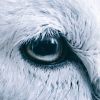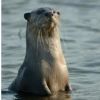12 Nature Conservation Books That Experts Trust and Recommend
Insights from Robert Macfarlane, James Rebanks, Chris Packham, and others to deepen your understanding of Nature Conservation






What if the future of our planet hinged on the pages of a book? Nature conservation isn't just a topic for scientists or activists; it's a living, breathing battle for survival that touches every corner of the globe. As species vanish and ecosystems teeter on the brink, understanding these complex challenges has never been more urgent.
Voices like Robert Macfarlane, author and Cambridge fellow, and James Rebanks, shepherd and writer, have championed books that peel back the layers of conservation's successes and failures. Macfarlane praises Rebirding for its generational insight into Britain's wildlife revival, while Rebanks highlights Wilding as a pivotal experiment in reintroducing nature to farmland. Their endorsements come from deep personal and professional commitment to preserving nature's delicate balance.
While these expert-curated books provide proven frameworks and inspiring stories, readers looking to tailor their learning to specific ecosystems, skill levels, or conservation goals might consider creating a personalized Nature Conservation book. This approach helps bridge broad knowledge with your unique journey into conservation.
Recommended by James Rebanks
Shepherd and author of English Pastoral
“Every farmer (and perhaps every conservationist) in Britain needs to go and spend a day at Knepp. The Knepp 'wilding' project is a vitally important experiment for working out what we can do to let nature back into our farmed landscapes. . . . This book tells this vital story and deserves to be widely read.” (from Amazon)
by Isabella Tree, Eric Schlosser··You?
by Isabella Tree, Eric Schlosser··You?
Isabella Tree, an award-winning author and manager of the Knepp Wildland Project, draws from her hands-on experience restoring 3,500 acres of farmland to a thriving natural ecosystem. You’ll gain insight into how rewilding can revive biodiversity by mimicking ancient megafauna behaviors through free-roaming herds, transforming depleted land into a sanctuary for rare species like turtle doves and nightingales. The book blends natural history with the practical challenges of shifting agricultural practices, making it particularly relevant if you’re interested in land use, habitat restoration, or community-driven conservation. While it offers hope and concrete examples, it’s best suited for those ready to reconsider traditional farming and conservation mindsets.
Recommended by Robert Macfarlane
Author and Cambridge Fellow specializing in nature and place
“@Rebirding1 @wainwrightprize @pelagicpublish @hughbrazier @GeorgeMonbiot @herdyshepherd1 @IoloWilliams2 @ChrisGPackham @PhilipPullman @isabella_tree @caitlinmoran @JLewisStempel @charlottebsmith What a wonderful & moving thread of thanks, Benedict; the book as a work of many hands across several generations. That all said: *huge* congratulations on this recognition of your important, inspiring book.” (from X)
by Benedict Macdonald··You?
by Benedict Macdonald··You?
Benedict Macdonald’s background as a conservation writer and wildlife television director deeply informs this book, which challenges the traditional British approach of modifying farmland to conserve wildlife. You learn about the historical loss of species and ecosystems across Britain, from vanished megafauna to the decline of invertebrates, and why current conservation efforts have fallen short. The book makes a strong case for rewilding—restoring natural habitats and allowing wildlife to recover in Britain’s abundant but underused landscapes. If you care about ecological restoration or rural futures, this book offers detailed insights into how rewilding could revive both wildlife and local economies.
This tailored book explores the essential principles and pressing challenges of nature conservation, crafted to align with your unique background and interests. It examines diverse conservation methods—from habitat restoration to species protection—offering a personalized synthesis of expert knowledge that focuses on your specific goals. Through this tailored approach, it reveals how ecological efforts can be effectively applied in different contexts, addressing the complexities of preserving biodiversity and sustaining ecosystems. Whether you aim to understand conservation science, implement practical actions, or explore emerging concerns, this book provides a focused pathway that matches your learning needs and deepens your connection to the natural world.
Recommended by Publisher's Weekly
“These accounts of conservation success are inspirational.” (from Amazon)
by Jane Goodall, Gail Hudson, Thane Maynard·You?
by Jane Goodall, Gail Hudson, Thane Maynard·You?
When Jane Goodall, alongside Cincinnati Zoo Director Thane Maynard, combines decades of hands-on wildlife research with vivid storytelling, you get more than just a recount of endangered species' plights — you get a front-row seat to their remarkable recoveries. This book dives into detailed cases like the resurgence of the California Condor and the American Crocodile, blending Goodall's personal field experiences with scientific insights. You'll gain a nuanced understanding of conservation efforts, habitat protection, and species recovery strategies. If you care about the practical realities of saving wildlife and want to see hope grounded in real examples, this book offers a clear-eyed, inspiring perspective.
Recommended by Jane Alexander
Actor and Conservationist
“If you read only one book about species on the verge of extinction today, this is the one to read. Steve Winter's gorgeous photos of majestic tigers, coupled with Sharon Guynup's moving stories of why they are declining tells it all. We learn about the men and women dedicated to protecting the 3,500 tigers left in the wild and what we can do to help. Winter manages to capture the very essence of tiger in his stunning photographs. Beautiful book in every way.” (from Amazon)
by Sharon Guynup··You?
by Sharon Guynup··You?
When Sharon Guynup teamed up with National Geographic photographer Steve Winter, they crafted a vivid account of the tiger's struggle for survival that goes beyond mere facts. You’ll explore intimate moments, like a tiger mother nurturing her cub, and gain insights into the risks posed by poachers and habitat loss. Through compelling chapters detailing Winter’s expeditions in Myanmar’s jungles and Sumatra’s forbidden zones, you come away with a clear picture of conservation efforts. This book suits anyone passionate about endangered species or wildlife photography, offering both emotional depth and concrete understanding of tiger preservation challenges.
Recommended by Lincoln Journal Star
“To help us see what we stand to lose -- just here in the United States.” (from Amazon)
by Joel Sartore··You?
by Joel Sartore··You?
Joel Sartore, a seasoned National Geographic photographer with a career spanning over two decades, channels his deep connection to wildlife into this visual exploration of endangered species across America. Through 80 meticulously captured portraits, you gain not only a vivid look at animals like red wolves and Hawaiian orchids but also insight into the Endangered Species Act's role in their survival. The book balances striking photography with history and policy, making it a fitting study for anyone looking to understand both the creatures themselves and the broader conservation efforts. If your interest lies more in intimate wildlife storytelling than scientific jargon, this book offers a compelling perspective that is both educational and moving.
by TailoredRead AI·
This tailored book explores the vital process of rejuvenating natural habitats and boosting biodiversity through a focused, step-by-step plan designed specifically for your interests and background. It examines the science and practical actions required to restore ecosystems, addressing challenges unique to your goals and environment. By concentrating on your specific needs, this personalized guide reveals how to identify habitat degradation, implement effective restoration techniques, and foster sustainable biodiversity growth. The content connects ecological principles with practical steps, offering an engaging pathway to understand and improve habitat health. This focused approach helps you gain in-depth knowledge and actionable understanding while matching your experience and ambitions in nature conservation.
Recommended by Richard Louv
Author of Last Child in the Woods
“The greatest enemy of life on Earth is not fossil fuel, but human hubris. In our eleventh hour, the art of Allen Crawford and the words of Terry Tempest Williams offer witness and warning. A Wild Promise celebrates the lives that have been saved by the Endangered Species Act, even as that half-century act itself is endangered. This gentle, strong book marks this moment of peril and promise. We can ignore, and thereby accept, the dark tsunami of extinction moving through sea and air and across the land faster than any previous wave. Or we can find the power of our humility and our wider kinship. We can reconnect our children and ourselves to the rest of nature. We can reverse the deepening loneliness of our species. We can turn the tide.” (from Amazon)
by Allen Crawford, Terry Tempest Williams··You?
by Allen Crawford, Terry Tempest Williams··You?
Drawing from Allen Crawford's extensive experience illustrating over 400 species for the American Museum of Natural History, this book pairs his vivid artwork with Terry Tempest Williams' evocative writing to explore the legacy of the Endangered Species Act. You’ll encounter detailed illustrations of over eighty animals alongside narratives that highlight the Act’s role in protecting habitats from oceans to prairies. This book offers insight into how conservation laws have preserved species like the Steller sea lion and red wolf, making it a rich resource if you care about wildlife preservation and environmental policy. Its blend of artistry and storytelling invites you to reflect on your connection to threatened species and the urgency of conservation efforts.
Recommended by Natalie Bennett
Green Party leader and environmental advocate
“I reviewed a brilliant book about the loss of the baiji” (from X)
by Samuel Turvey··You?
When Samuel Turvey, a conservation biologist at the Zoological Society of London, first uncovered the grim fate of the Yangtze River dolphin, he set out to document not only the species' natural history but also the policy and funding failures that doomed it. You’ll gain insight into the ecological pressures from industrialization on the Yangtze River, the cultural significance of the baiji, and the complex interplay of science, politics, and conservation efforts. Turvey’s firsthand account reveals the challenges of international collaboration and the shortcomings of captive breeding programs, offering a sobering lesson for anyone involved in protecting endangered species. This book is especially relevant if you want to understand how conservation science can clash with bureaucracy and what that means for species survival.
by Robert W. Shumaker··You?
Robert W. Shumaker's decades leading the Indianapolis Zoo shaped this compelling collection of firsthand accounts from top wildlife conservationists. You gain insight into critical conservation challenges, such as poaching, habitat loss, and species extinction, directly from celebrated scientists and activists who have pioneered effective strategies. The book dives into complex topics like predator-prey dynamics and community engagement through the voices of experts like George Schaller and Iain Douglas-Hamilton. If you're passionate about real-world conservation efforts and want to understand what it takes to protect endangered species, this book offers a grounded, revealing perspective.
Recommended by Deborah Meaden
Business leader and TV personality
“I would add Philip Lymbery's book is a great read. Warm, personal, terrifying, hopeful but above all highly engaging and thought provoking. #60Harvests” (from X)
by Philip Lymbery··You?
by Philip Lymbery··You?
Philip Lymbery, a recognized authority on the environmental costs of industrial agriculture, lays bare the precarious state of the world’s soils and their critical role in sustaining food systems. You’ll learn how industrial farming practices have accelerated soil degradation and what innovative approaches and traditional methods are being reintroduced to reverse this trend. Chapters highlight case studies from diverse regions like Brazil and Italy, painting a global picture of both the crisis and hopeful solutions. This book is well-suited for anyone concerned with the intersection of agriculture, ecology, and sustainability, offering insights that challenge the status quo without veering into alarmism.
Recommended by George Monbiot
Environmental journalist and author
“4. See @guyshrubsole's excellent book "The Lost Rainforests of Britain" for more on this subject. And, across the water, @IrishRainforest's great "An Irish Atlantic Rainforest". Photo by @njburnell” (from X)
by Guy Shrubsole··You?
by Guy Shrubsole··You?
Guy Shrubsole, an environmental campaigner with deep roots in climate and nature advocacy, explores Britain's little-known temperate rainforests in vivid detail. You discover how these vanished ecosystems once inspired cultural legends and how fragments still survive in places like the Western Highlands and Devon. The book guides you through the natural history and current conservation challenges, highlighting the species that depend on these habitats and the efforts to restore them. It's an insightful journey for anyone interested in British ecology, conservation policy, or cultural history tied to nature’s lost landscapes.
by Joel Sartore··You?
Joel Sartore, a seasoned National Geographic photographer and 2018 Explorer of the Year, offers an arresting visual and narrative journey into the plight of the world's most vulnerable animals. This book compiles striking portraits of species teetering on extinction, from the Sumatran rhinoceros to the Salt Creek tiger beetle, capturing their unique characteristics and fragility. Alongside his images, Sartore integrates insights from conservationists and scientists, providing you with a nuanced understanding of current preservation efforts and species survival challenges. You'll gain both an emotional and intellectual connection to endangered wildlife, making it a meaningful read for anyone invested in biodiversity and conservation.
by Ann Marie Brown··You?
Ann Marie Brown draws on her extensive experience as a travel and outdoor writer to explore California's rich natural heritage in this beautifully illustrated guide. The book unfolds across the state's diverse regions, offering detailed descriptions of 150 parks, reserves, and wild places, including Yosemite's waterfalls and the palm oases of Coachella Valley. You’ll find practical information on activities, access, and the best hikes, alongside vivid photography that brings each site’s flora and fauna to life. Whether you're planning a day trip or a week-long adventure, this guide helps you appreciate California’s ecological variety and plan your outings with confidence.
Get Your Personal Nature Conservation Strategy ✨
Skip generic advice—get targeted conservation insights in minutes.
Trusted by 12+ leading conservation experts worldwide
Conclusion
Together, these 12 books paint a vivid picture of nature conservation’s challenges and triumphs—from hands-on restoration projects to the intricate politics shaping endangered species' fates. If your passion lies in understanding how to restore degraded lands, starting with Wilding and Rebirding offers practical, hopeful pathways. For those drawn to the emotional and visual power of wildlife, Rare and Tigers Forever deliver compelling portraits and stories.
Rapid learners seeking actionable strategies might pair Saving Endangered Species with Hope for Animals and Their World for grounded scientific and field insights. Meanwhile, readers eager to grasp policy and systemic change will find A Wild Promise and Sixty Harvests Left particularly enlightening.
Alternatively, you can create a personalized Nature Conservation book to bridge the gap between general principles and your specific situation. These books can help you accelerate your learning journey and deepen your impact in preserving the natural world.
Frequently Asked Questions
I'm overwhelmed by choice – which book should I start with?
Start with Wilding if you're interested in how rewilding transforms farmland, or Hope for Animals and Their World for inspiring species recovery stories. Both provide accessible entry points guided by leading conservationists.
Are these books too advanced for someone new to Nature Conservation?
Not at all. Many books like The Lost Rainforests of Britain and Sixty Harvests Left are written to engage newcomers with clear storytelling and practical insights.
What’s the best order to read these books?
Begin with broader themes in Wilding and Rebirding, then explore species-specific works like Tigers Forever. Follow with policy-focused titles such as A Wild Promise to round out your understanding.
Do I really need to read all of these, or can I just pick one?
You can definitely start with one that aligns with your interests. Each book stands strong alone, but together they offer a richer, more nuanced view of conservation challenges and solutions.
Which books focus more on theory vs. practical application?
Sixty Harvests Left and A Wild Promise lean toward policy and theory, while Wilding and Rebirding offer hands-on case studies of ecological restoration.
How can a personalized Nature Conservation book complement these expert selections?
Yes, expert books provide solid foundations like Hope for Animals and Their World, but personalized books tailor insights to your goals and background, making the knowledge practical and actionable. Try creating your own here.
📚 Love this book list?
Help fellow book lovers discover great books, share this curated list with others!
Related Articles You May Like
Explore more curated book recommendations











